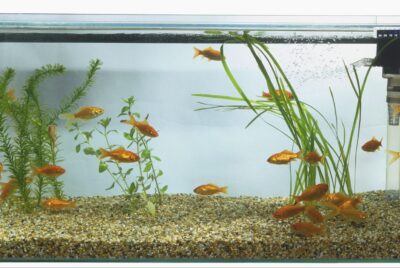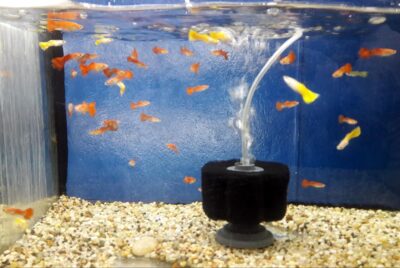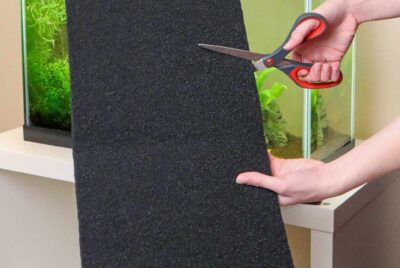Protein Skimmer Saltwater
As an avid fishkeeping enthusiast, I understand the challenges that come with maintaining a thriving saltwater aquarium. One essential piece of equipment that every saltwater aquarium owner should consider investing in is a protein skimmer. In this article, I will guide you through the world of protein skimmers, explaining their importance, how they work, and provide valuable tips for selecting, installing, and maintaining a protein skimmer in your saltwater aquarium.
Introduction
When it comes to saltwater aquariums, maintaining pristine water quality is crucial for the health and well-being of your marine inhabitants. Protein skimmers play a vital role in achieving and maintaining optimal water conditions. They are designed to remove organic waste, proteins, and other pollutants that can accumulate in your aquarium, leading to poor water quality.
What is a Protein Skimmer?
A protein skimmer, also known as a foam fractionator, is a mechanical device that aids in the removal of dissolved organic compounds (DOCs) from the water in your saltwater aquarium. These compounds, such as fish waste, uneaten food, and decaying matter, can contribute to high nutrient levels and the accumulation of harmful substances in the aquarium water.
The Importance of Protein Skimmers in Saltwater Aquariums
In a closed system like a saltwater aquarium, the natural filtration processes found in the ocean are absent. Without adequate filtration, organic compounds can build up, leading to poor water quality, increased algae growth, and stressed marine life. This is where protein skimmers come to the rescue.
Protein skimmers excel at removing organic compounds before they have a chance to break down and release harmful substances into the water. By removing these compounds, protein skimmers help prevent the accumulation of nitrates, phosphates, and other pollutants that can fuel algae growth and negatively impact the health of your fish, corals, and other invertebrates.
How Does a Protein Skimmer Work?
A protein skimmer operates on the principle of air-water interaction. It introduces fine bubbles into the skimmer chamber, creating a large surface area for dissolved organic compounds to adhere to. These bubbles rise through the skimmer, carrying the waste with them, and eventually form a foam at the top.
The foam, known as skimmate, contains the collected organic compounds, which are then removed from the skimmer. This process effectively removes a significant portion of the waste from the water, resulting in improved water quality.
Choosing the Right Protein Skimmer for Your Saltwater Aquarium
Selecting the right protein skimmer for your saltwater aquarium is crucial to ensure optimal performance and efficient waste removal. Here are several factors to consider when making your decision:
Tank Size
The size of your aquarium plays a significant role in determining the appropriate protein skimmer. Larger tanks require skimmers with higher capacity and efficiency to effectively handle the increased volume of water.
Skimmer Size and Capacity
Consider the physical size of the protein skimmer and its capacity to handle the bioload of your aquarium. Ensure that the skimmer you choose is capable of handling the waste production of your livestock.
Skimmer Type
Protein skimmers come in various types, including hang-on-back (HOB), in-sump, and external models. Each type has its advantages and considerations. Choose a skimmer that suits your aquarium setup and personal preferences.
Budget
Set a budget for your protein skimmer purchase, but remember that investing in a quality skimmer will benefit your aquarium in the long run. Avoid cutting corners by opting for subpar skimmers, as they may not provide adequate performance or durability.
Ease of Maintenance
Consider the ease of maintenance when selecting a protein skimmer. Look for models that are user-friendly, easy to clean, and have readily available replacement parts.
Installation and Placement of Protein Skimmers
Once you’ve selected the protein skimmer that best suits your needs, proper installation and placement are essential for its effectiveness. Follow these guidelines for optimal performance:
- Place the skimmer near the sump or in-sump compartment of your aquarium.
- Ensure the skimmer is properly leveled and stable to prevent vibrations and noise.
- Adjust the water level in the skimmer chamber according to the manufacturer’s recommendations.
- Allow the skimmer to run for a few days to break in before expecting optimal performance.
Proper Maintenance and Care for Protein Skimmers
Regular maintenance is key to keeping your protein skimmer functioning optimally. Follow these maintenance tips to ensure its longevity and efficiency:
- Clean the collection cup regularly to remove accumulated skimmate.
- Rinse the skimmer pump and impeller to prevent clogging.
- Check the air intake for any obstructions and clean as necessary.
- Inspect all tubing and connections for leaks or damage.
- Clean the skimmer body and chamber periodically to prevent buildup.
Troubleshooting Common Issues with Protein Skimmers
While protein skimmers are reliable pieces of equipment, occasional issues may arise. Here are some common problems and their solutions:
Excessive Microbubbles
If your skimmer is producing an excessive amount of microbubbles, check for the following:
- Ensure the skimmer is properly leveled and stable.
- Adjust the water level in the skimmer chamber.
- Check for any air leaks in the skimmer’s plumbing.
Poor Skimmate Production – (Protein Skimmer Saltwater)
If your skimmer is not producing adequate skimmate, consider the following:
- Adjust the air intake and water flow rate to optimize performance.
- Clean the collection cup and skimmer body to remove any accumulated debris.
- Check the water chemistry and nutrient levels in your aquarium.
Skimmer Overflowing
If your skimmer is overflowing, try the following:
- Adjust the water level in the skimmer chamber.
- Clean the collection cup to ensure proper drainage.
- Check for any clogs or obstructions in the skimmer’s plumbing.
Additional Tips for Optimizing Protein Skimmer Performance
To maximize the efficiency of your protein skimmer, consider implementing the following tips:
- Avoid using any protein skimmer additives unless recommended by reputable sources.
- Regularly monitor and adjust the water level in the skimmer chamber.
- Ensure proper water circulation within your aquarium to enhance skimming efficiency.
- Maintain a balanced and stable water chemistry by performing regular water tests and appropriate adjustments.
The Benefits of Using a Protein Skimmer in a Saltwater Aquarium
The benefits of using a protein skimmer in your saltwater aquarium are numerous:
- Improved water clarity and reduced dissolved organics.
- Decreased nutrient levels, inhibiting algae growth.
- Enhanced oxygen exchange, promoting a healthy environment for marine life.
- Increased resilience to sudden changes in water chemistry.
- Improved overall water quality, benefiting the health of fish, corals, and other invertebrates.
Potential Drawbacks of Protein Skimmers
While protein skimmers are highly beneficial, it’s important to be aware of potential drawbacks:
- Some skimmers may produce noise and vibrations, requiring careful placement.
- Initial setup and calibration can be time-consuming.
- Advanced skimmers may require additional equipment, such as an external pump.
- Skimmers may remove trace elements and some beneficial substances, necessitating supplementation.
Conclusion
Investing in a quality protein skimmer is a wise decision for any saltwater aquarium enthusiast. By effectively removing organic waste and maintaining optimal water quality, protein skimmers contribute to the overall health and vitality of your marine ecosystem. Remember to consider factors such as tank size, skimmer type, and maintenance requirements when selecting a protein skimmer. Follow the installation and maintenance guidelines, troubleshoot any issues that arise, and enjoy the benefits of a cleaner and healthier saltwater aquarium.
Frequently Asked Questions – (Protein Skimmer Saltwater)
Q: Can I use a protein skimmer in a freshwater aquarium?
A: Protein skimmers are primarily designed for saltwater aquariums and are not necessary for freshwater setups. However, in certain cases, such as heavily stocked freshwater tanks or specialized setups, protein skimmers can be beneficial.
Q: How often should I clean the protein skimmer collection cup?
A: The frequency of cleaning the collection cup depends on the bioload and nutrient levels in your aquarium. Generally, it is recommended to check and empty the collection cup once a week or when it becomes full.
Q: Can I turn off the protein skimmer at night?
A: While it is generally safe to turn off the skimmer at night, it is advisable to keep it running 24/7 for optimal waste removal. The skimmer plays a vital role in maintaining water quality, and uninterrupted operation ensures consistent performance.
Q: Is it normal for the skimmer to produce a strong odor?
A: It is common for skimmate to have a distinct odor due to the organic compounds it contains. However, if the odor becomes excessively strong or foul, it may indicate an issue with water quality or the skimmer’s operation. In such cases, it is recommended to investigate further.
Q: Can I use a protein skimmer with a nano reef tank?
A: Yes, protein skimmers are available in various sizes, including models designed for nano reef tanks. When selecting a skimmer for a nano tank, ensure it is appropriately sized for the tank’s water volume and livestock.




